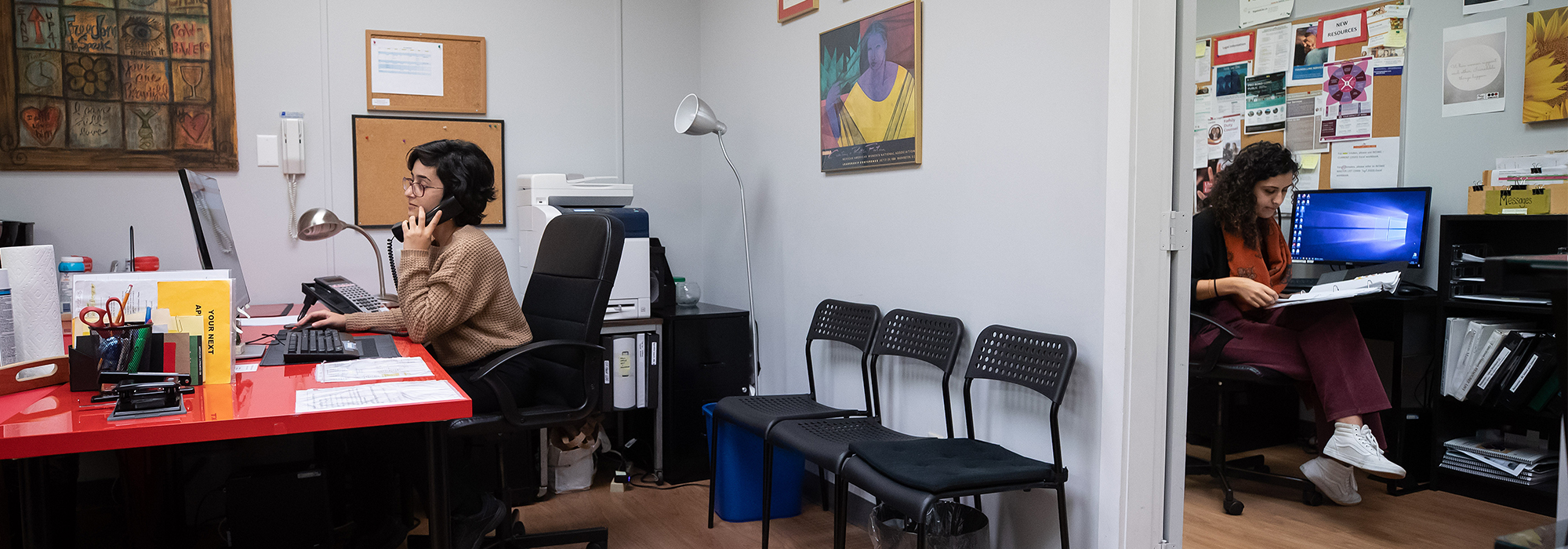
The finale for “The Undoing” was deemed by HBO to be its “television event of the year,” featuring Nicole Kidman and Hugh Grant as wealthy and beautiful Manhattanites embroiled in a murder mystery. The six-part miniseries relied on flashbacks that repeatedly revealed the grotesquely battered face of the young, racialized female victim. It was yet another example of the pornification of femicide and how it’s become normalized as entertainment.
As millions of people watched the fictional show’s last episode on Nov. 29, United Nations Women had started its 16 Days of Activism Against Gender-Based Violence (from Nov. 25-Dec. 10). The UN Secretary General suggests that COVID-19 has meant an “increase in the already existing pandemic of violence against women.” One-in-three women worldwide will experience physical or sexual violence – most by an intimate partner – in their lifetime. And because of COVID, all types of violence have intensified – making this a “shadow pandemic.”
Here in this country, 67 per cent of Canadians know a woman who has experienced sexual or physical abuse. Every six days, a woman in Canada is killed by her intimate partner. Canada spends $7.4 billion on spousal violence alone.
We hardly ever hear about this routinized violence though. Police have a tendency to keep intimate partner crimes quiet, considering them to be a private issue, even though according to Statistics Canada, they make up about 30 per cent of all police-reported violent crimes.
But there’s more going on right now than just increased levels of violence. Women’s financial and social independence are being threatened by this pandemic, meaning women are more at risk of violence and exploitation. What’s more, there has also been a loss of available safe spaces for women in Canada.
Shelters and transition homes during COVID-19
Shelters and transition homes across the country are operating at reduced capacity as a result of public health regulations, a new survey released by Women’s Shelters Canada suggests. The majority (71 per cent) of the respondents to the survey say they have had to reduce beds to ensure there is a COVID-19 isolation unit available.
As well, the shelters and transition houses surveyed say that in the second phase of the pandemic (June to October), calls for help increased. Respondents also suggested that it was difficult for women to leave during lockdown because they were being monitored by their abusers or they were fearful of the virus.
Over half of the shelters and transition homes have noted an increase in the seriousness of cases, as suggested by the UN Women campaign. Among those who answered the survey, 16 per cent saw much more severe violence, 36 per cent reported somewhat more severe violence while almost half (48 per cent) noted about the same level of violence.
At the same time, because of the pandemic, fundraising for domestic violence shelters is much more difficult. Many cancelled events put programs in jeopardy. The survey indicates that slightly more than half of the respondents to the survey had fundraised less than in years previously (53 per cent). Some have had to lay off staff because of a lack of sustainable funding.
Women’s financial independence
As the employment statistics start to become known about the impact of the pandemic on Canadian workers, it becomes clear that women have borne the brunt of this crisis.
Enter yet another type of pandemic term: the “she-cession,” because the economic crisis of the pandemic has hurt women, particularly racialized women, at rates much higher than men. RBC Economics released a report in July suggesting that women’s participation in the labour force is “down from a historic high to its lowest level in over 30 years.”
It does look like things have improved in the second round of the pandemic. A recent Statistics Canada report from September suggests that the economy may be recovering, with employment returning to pre-COVID levels for mothers and fathers.
However, this same study noted that “mothers (33.3 per cent) were more likely than fathers (26.8 per cent) to have worked most of their hours from home.” This suggests that women were more likely “trying to balance work and childcare responsibilities.” In September, “the number of mothers who worked less than half of their usual hours for reasons most likely related to COVID-19 was 70 per cent higher than in February.”
The federal government announced in May that it was providing $40 million through the federal agency Women and Gender Equality Canada for women fleeing gender-based violence. That’s a good start, but it’s not enough. Provincial and territorial governments are responsible for operational funding for shelters and transitional homes, and according to the November survey, respondents felt that they needed more money to ensure long-term planning. This would be another important step.
We know that COVID-19 has altered the lives of many people in Canada and resulted in close to 13,000 deaths. Governments at all levels should step in to ensure that femicide doesn’t become a shadow pandemic because of a lack of financial independence or safe spaces for women. Violence against women isn’t just a banal Hollywood plotline – it’s real life.
Photo: Crisis line volunteers Shoak Alhussami, left, and Dyalla Popatia are seen at Battered Women’s Support Services, in Vancouver, on October 13, 2020. THE CANADIAN PRESS/Darryl Dyck.








